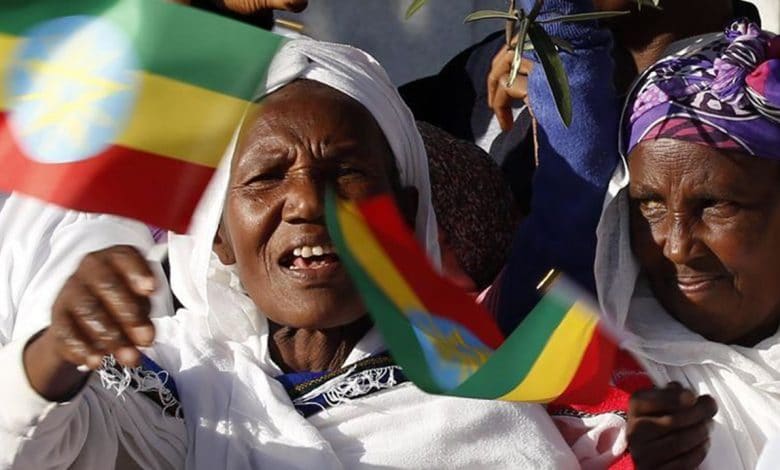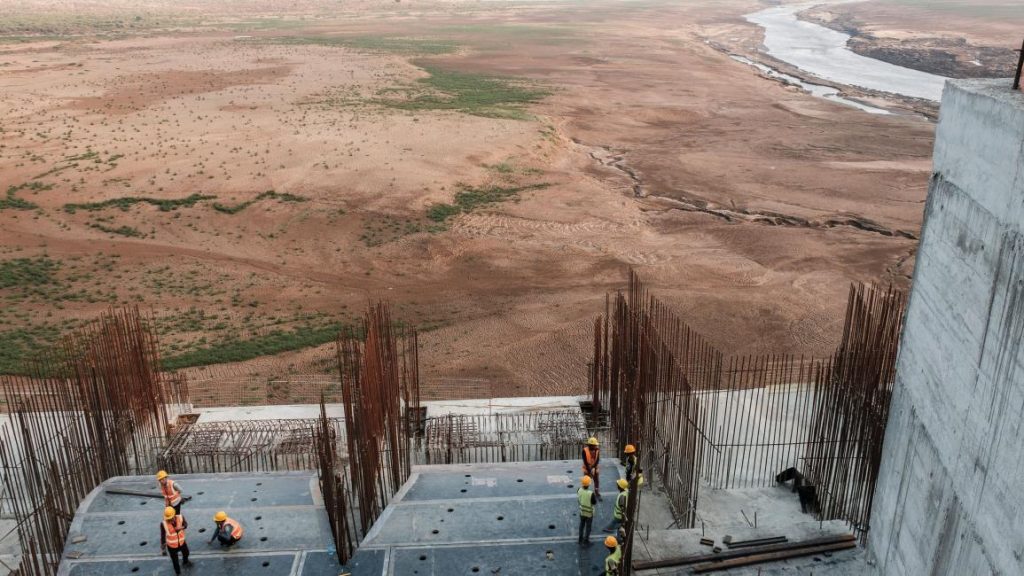
Ethiopia: Attitude of Muslims toward the recent internal crisis
Muslims have existed in Ethiopia for a very long time, which extended several centuries before the establishment of the current contemporary political state. The nucleus of the first Muslim community was formed in Ethiopia when Muslims first migrated there before the inception of the first Muslim State in Medina in the era of Prophet Mohammed (peace be upon him). Then Islam started to spread in the jungles of Ethiopia at successive intervals until it became the predominant religion in the country. However, the spread of Islam there at this speedy pace aroused the ire of Christians and led to a doctrinal/political conflict that spanned for more than six centuries between Muslims and Christians, which ended up with the defeat of Muslims in 1887 after an international intervention from Portugal and the global Catholic Church, and the emergence of European colonialism that dominated the Horn of Africa.
Muslims exist in Ethiopia in most geographical regions and among most ethnic groups, but they are largely concentrated in the eastern, southeastern and northern western regions. They consist of multiple ethnic groups, most notably the Oromo, Somalis, Sidamo as well as Amhara and Tigray, where the Oromos, who account for nearly half of the population of Ethiopia, are mostly Muslims, as nearly 80% of them are Muslims. In addition. the number of Muslims among the Amhara and the Tigray has exceeded 15%, nearly three million.
The following table shows distribution of Muslims across the ethnic groups in Ethiopia:
| Ethnic Groups | Population % | Muslims % | Christians % | Others % |
| Oromo | 40- 50% | 80% | 10% | 10% |
| Amhara and Tigray | 32% | 15% | 35- 50% | – |
| Sidamo | 9% | 100% | – | – |
| Sankila | 6% | 100% | – | – |
Thus, Muslims in Ethiopia constitute more than 56 % of the country’s total population, about 36 million people out of more than sixty-seven million people living in Ethiopia. Most of the Muslims of Ethiopia belong to the Sunnis according to the doctrine of Imam Shafi’i, and some of them follow the doctrine of Imam Abu Hanifa and Imam Malik, while there are a few Zaydi and Ismaili Shiites. However, most of Ethiopia’s Muslims are involved in Sufi groups.
Political situation of Muslims in Ethiopia
The political situation of Muslims in Ethiopia has gone through four different stages:
The first stage, the absolute monarchy, which extended for centuries and ended with the death of King Haile Selassie in 1974, during which the role of Muslims was completely absent. The second stage, which came with the advent of the communist regime led by Mengistu, during which the situation of Muslims further worsened. The third stage, the democratic pluralism, which started with the fall of the Mengistu regime in 1991. The fourth stage, post-Meles Zenawi, which witnessed a political and religious openness.
In fact, the political situation of Muslims in Ethiopia began to improve from 1991 with the fall of the Mengistu regime and the amendment of the constitution in 1995, stipulating that the “State and religion are separate”, that “There shall be no state religion”, and that “The state shall not interfere in religious matters and religion shall not interfere in state affairs”.
This is considered a good thing in redressing Muslims in Ethiopia and correcting their previous conditions when Christianity was considered the official religion of the state, where the new situation reduced the influence of the Church and allowed for freedom of worship for Muslims and Christians alike. Then, with the term of President Meles Zenawi, which extended to 2006, the authorities allowed Muslims to deal with laws derived from Islamic law in special courts with respect to personal and family status. They also allowed the establishment of schools for Muslims to teach the Islamic religion and the Arabic language to their children. The current authorities (PMAC) declared that all religions are equal, where the Muslim holiday became an official state holiday.
Zenawi’s government allowed Muslims for the first time to participate in government work, where his government included 12 Muslim ministers, which reduced the differences between them and their Christian counterparts, and even activated the role of the Supreme Council for Islamic Affairs, which took over the affairs of education, spreading Islam and building mosques. Muslims benefited greatly from democratic openness, based on the new Ethiopian constitution, which emphasized the democratic approach to state governance.
In fact, the new constitution represented a major and fundamental change in the structure of the Ethiopian state, according to which the federal system was approved and adopted, where Ethiopia was divided into nine regions and nine nationalities, and seven minorities were able to use their own languages in basic education.
Despite the significance of education in Muslim children’s access to state positions, Muslim children who refrained from enrolling in official government schools due to the absence of the Arabic language and Islamic curricula during the period before adoption of federalism and transformation of Ethiopia into a secular state, which affected Muslims’ opportunities to obtain government positions and jobs in the state. Therefore, most of them were preoccupied with trade, grazing, agriculture, and the like, which weakened the influence of Muslims on the ground, especially in political decisions, despite their large numbers.
With the advent of Abiy Ahmed to power, the discourse of reconciliation with Muslims clearly emerged. Abiy Ahmed’s government supported the formation of the Supreme Council of Muslims and recognized its legitimacy after sixty years of claiming that, where the council was announced in May 2019, and the Mufti Sheikh Haj Omar Idris was chosen as head of the council, in addition to inauguration of the first Islamic college.
Ethiopian Muslims’ attitude toward recent crisis
First, taking into account that the recent crisis focused on the Tigray region, which rebelled against the central state, according to the government’s narrative, the proportion of Muslims in the Tigray region is considered the lowest among the four regions that include Muslims, where 97% of the population of the Somali region are Muslims, approximately 5 million people, followed by Afar region, where 99% of its population are Muslims, approximately 1.5 million people, the Amhara region, where 18% of its population are Muslims, and then the Tigray region, where only 5% of its population are Muslims, distributed in separate areas without having a specific focal point.
Second, the recent crisis does not involve a region mostly inhabited by Muslims, in addition to the fact that religion has nothing to do with the crisis. Rather, it is a crisis of influence between the Tigray and the Amhara, who took turns ruling Ethiopia, where the Tigrayans have controlled the state with respect to the central government since the era of Meles Zenawi, who belongs to the same ethnicity. With the advent of Abiy Ahmed to power and the return of the Amhara to power again in alliance with the Oromo, Ahmed began to target leaders from the Tigray, with charges related to corruption and violation of human rights. In fact, there is a feeling of injustice among the rest of ethnicities towards the influence of the Tigray and the fact that they have obtained privileges at the expense of the rest of ethnicities during the period of their rule, which made the attitude of these ethnicities towards the recent crisis closer to negative neutrality in favor of the government, than supporting the Tigray.
Third, the absence of a unified Islamic bloc, whether in the form of an Islamic current or party, was behind the Muslims’ fading voice, and their inability to have a positive role via conducting a dialogue or negotiation, or offering a peaceful solution initiative to the crisis. In fact, Muslims are still at the beginning of the road towards legitimizing and legalizing their status and their official and semi-official religious institutions, despite occurrence of some violent crises between some regions and Islamic communities, as happened in the Somali region in 2017, and also as happened when the Oromo restricted the movement of one of leaders of these Muslim communities, Jawhar Mohamed, and the prosecution of others.
Fourth, the Oromo support for Abiy Ahmed to gain power through an alliance with him may have given the Oromo Muslims some advantages in power, state and government, despite the recent strained relationship. Therefore, this situation may have put this ethnic group in conflict between supporting the government, which it was behind its success and its access to power; or turning against it and rejecting its policies, which may affect the unity and cohesion of the internal ranks. Also, the absence of some leaders of the Oromo Front may have a significant impact on the lack of a positive or negative voice for the Oromo towards the recent crisis.
How far will Muslims affected?
If the conflict developed into an armed insurgency, or the current fighting in the Tigray region turned into a guerrilla war, draining the state and its resources, provoking unrest and targeting federal institutions or the national army, especially amid availability of armed militias to most major ethnicities – in this case, Muslims in Ethiopia are expected to be negatively affected by the latest crisis.
If the conflict developed into declaring a state of war or emergency and disrupting the constitution, or launching a military coup, taking into account that the Tigrayans have influence within the military institution – in this case, Muslims may return to square one, the situation before the 1995 federal constitution, where the elections will be canceled or postponed, a scenario that was expected in the 2016 elections, then it was re-discussed by the current government, which, according to some reports, was mainly behind the outbreak of the recent crisis with the Tigray. In this case, it is also not excluded that the Abiy Ahmed’s government will resign under internal and external pressures, as had happened with Desalegn’s government before.
If issues related to other ethnicities, as the Somali, the Afar, or even the Oromo (which are largely Muslims), are addressed in the same way, this means that the current government adopts a policy of choosing the appropriate timing to eliminate each group separately – and in this case also, there will be a negative impact on Muslims, especially amid complaints that previous governments sought to control the Islamic movement with different means to prevent any influence or role of the Islamic community; in addition to the steps Abiy Ahmed has taken in supporting figures from the American Evangelical Protestant Church to take up positions in his administration.
However, if the recent crisis ends up with boosting the concept of federalism in a way that allows redistribution of influence in proportion to the nine regions in terms of their population, resources, impact and contribution – in this case there will be a positive impact for Muslims in Ethiopia, especially if Muslims manage to activate the Supreme Council for Muslim affairs and transform the Council into an effective institution in supporting, developing and rehabilitating the Muslim community in Ethiopia to perform its duties and responsibilities and to act together with the state, the civil society organizations, and others that are active on the ground.
It is also expected that this recent crisis will have a positive impact on Muslims if it leads to a state of humility with respect to the government and various ethnicities, fair elections, and allowing Muslims to form Islamic parties to compete in elections to enable them to achieve their aspirations and hopes without the need to work under other umbrellas, institutions and identities, and also without the need to wait for grants and gifts from the state, according to pure constitutional rights, as granted to every citizen without regard to his ethnicity or religion.

Security Council & Egypt-Ethiopia Dam Dispute: Limits of the Role
